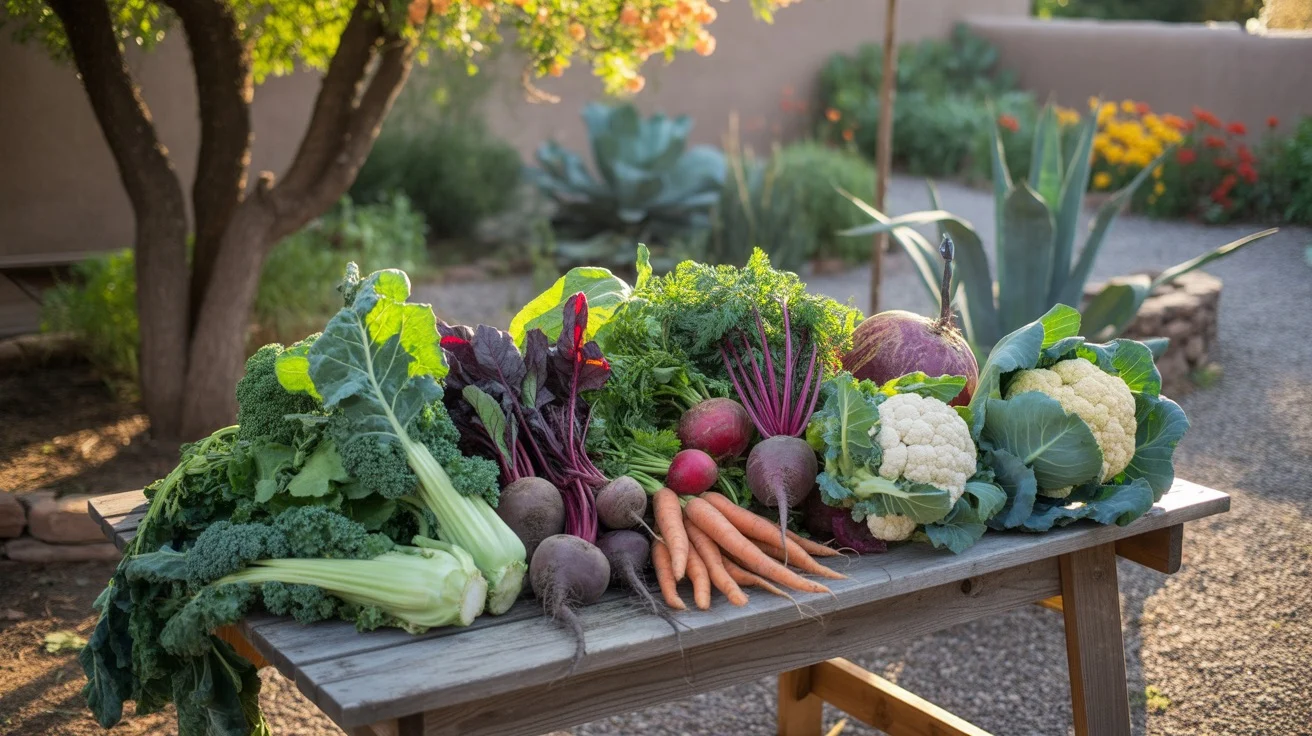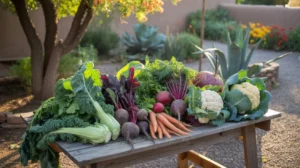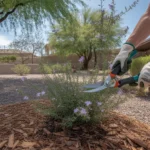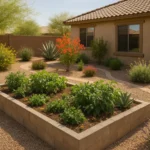As the scorching summer heat gives way to cooler autumn breezes, it’s the perfect time for Mesa gardeners to roll up their sleeves and dive into fall planting. With the right preparation and care, your garden can thrive during this temperate season, rewarding you with a bountiful harvest and stunning seasonal displays. In this ultimate guide, we’ll walk you through the essential steps to create a flourishing fall garden that will be the envy of your Mesa neighborhood.

Preparing Your Soil for Fall Planting
Before you start sowing seeds or transplanting seedlings, it’s crucial to ensure your soil is in top condition. Begin by clearing out any spent summer crops and weeds, then till the soil to a depth of about 12 inches. This will help loosen compacted soil and improve drainage, which is essential for healthy root development.
Next, enrich your soil with organic matter such as compost, well-rotted manure, or leaf mold. These amendments will provide essential nutrients, improve soil structure, and help retain moisture. If you’re unsure about your soil’s nutrient levels, consider conducting a soil test to determine if any specific amendments are needed.
Once your soil is prepared, smooth it out with a rake and create a level planting surface. Now you’re ready to start planting your fall garden favorites!
Choosing the Best Crops for Mesa’s Fall Climate
Mesa’s mild fall weather is ideal for a wide variety of cool-season crops. Some of the best vegetables to plant in your fall garden include:
- Leafy greens: Lettuce, spinach, kale, chard, and collards
- Root vegetables: Carrots, beets, radishes, and turnips
- Brassicas: Broccoli, cauliflower, Brussels sprouts, and cabbage
- Alliums: Onions, garlic, and leeks
- Peas and beans
In addition to vegetables, fall is an excellent time to plant annual flowers like pansies, violas, and snapdragons, which will add a pop of color to your garden beds. You can also sow wildflower seeds for a stunning spring display.
When selecting your fall crops, pay attention to the days to maturity listed on the seed packets or plant labels. Choose varieties that will have enough time to mature before the first frost hits Mesa, which typically occurs in late November or early December.
Planting and Caring for Your Fall Garden
With your soil prepared and crops selected, it’s time to start planting. For most fall vegetables, you can sow seeds directly into the garden beds. Follow the spacing and depth instructions on the seed packets, and keep the soil consistently moist until the seeds germinate.
If you prefer to start with seedlings, be sure to harden them off before transplanting them into the garden. This process involves gradually acclimating the plants to outdoor conditions over a period of 7-10 days. Once transplanted, water the seedlings deeply and mulch around them to retain moisture and suppress weeds.
As your fall crops grow, keep the garden well-watered and monitor for any signs of pests or diseases. Regularly remove any dead or yellowing leaves, and harvest your crops as they mature to encourage continued production.
Extending Your Fall Harvest
To maximize your fall gardening season, consider using season extension techniques. Row covers, cold frames, and low tunnels can help protect your crops from early frosts and allow you to continue harvesting well into the cooler months.
You can also succession plant your fall crops, sowing new seeds every 2-3 weeks to ensure a continuous supply of fresh produce. This technique works particularly well for fast-growing crops like radishes, lettuce, and spinach.
As the weather cools further, switch to hardier crops like kale, collards, and root vegetables, which can tolerate lower temperatures and even a light frost.
Enjoying the Fruits of Your Fall Labor
As your fall garden flourishes, take time to enjoy the fruits of your labor. Harvest your crops regularly to ensure peak freshness and flavor, and experiment with new recipes that showcase the seasonal bounty.
Share your surplus produce with friends, neighbors, or local food banks, and consider preserving some of your harvest by canning, freezing, or dehydrating for use throughout the winter months.
Fall gardening in Mesa is a rewarding experience that allows you to extend your growing season and enjoy fresh, homegrown produce well into the cooler months. By following these tips and putting in a little extra effort, you’ll be able to create a thriving fall garden that will nourish both your body and soul.











